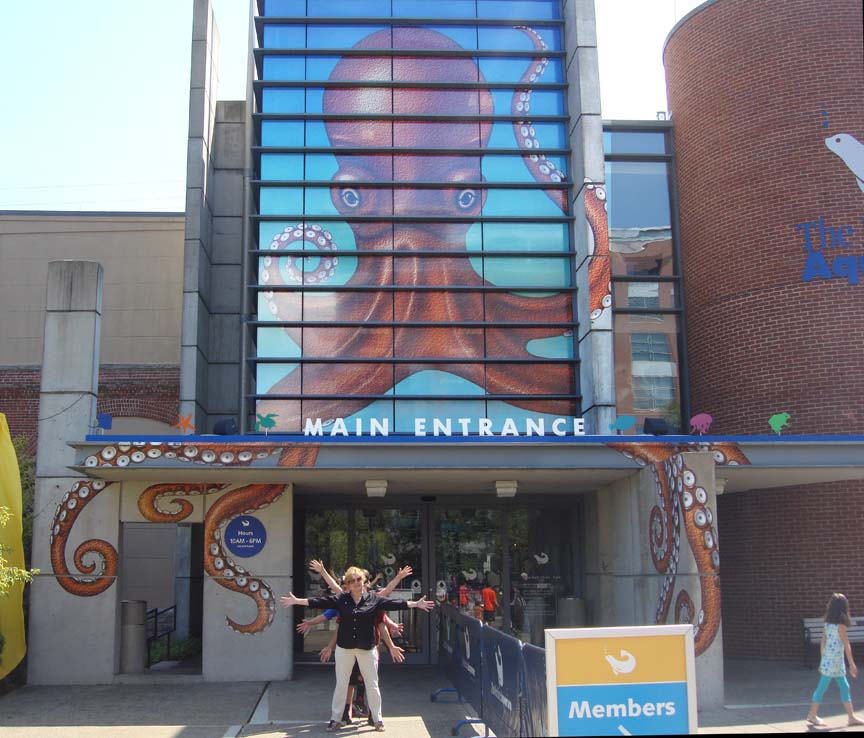
I spent the summer of 2015 creating the largest piece of art I’ve ever worked on. It graces (or intimidates) the main entrance of the wonderful Maritime Aquarium in Norwalk, Connecticut. “Wonder-full” is an apt description for the aquarium, as anyone who has ever taken their kids there can attest. The hard-working staff have succeeded in giving us land-dwellers a real glimpse of the bustling world of precious life that exists under the surface of our beloved Long Island Sound. Trip Advisor voted it the #1 Aquarium in New England, so their efforts have not gone unnoticed!
The aquarium started out at the same time as my illustration career, and I was lucky to land some work for them–newspaper ads, train station posters, and billboards on I-95, all hand-painted with an actual airbrush in the olden days. But this new building entrance Octopus is the largest display I’ve had the privilege of designing. I “painted” it on my computer, in my studio, and uploaded it to the car-wrapping company, Signs of Success in Stamford. They did the high-wire act of installing it, window-pane by window-pane, from a cherry picker, onto the building facade. So this post will describe my design and illustration process.
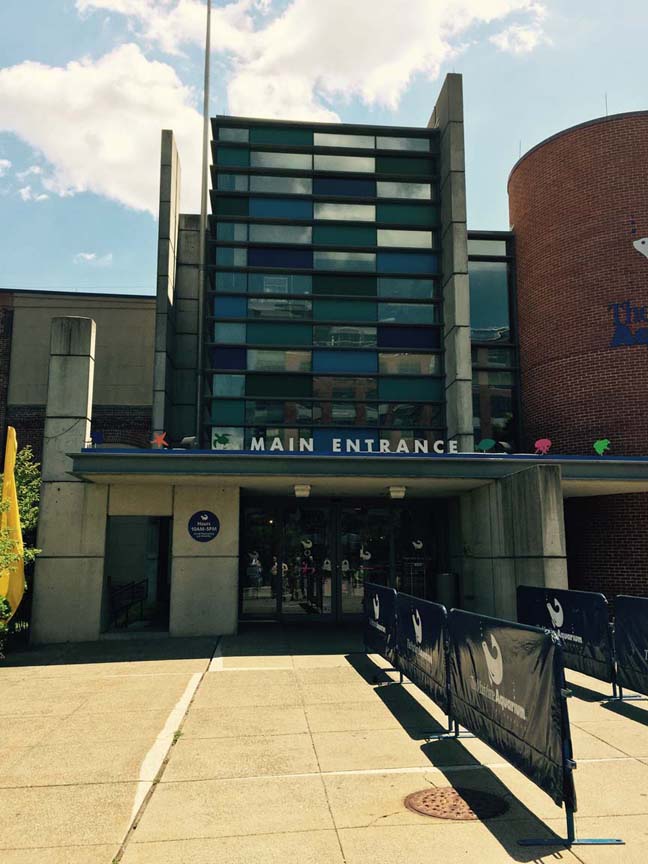
This is the 25-year-old building facade that needed a facelift.
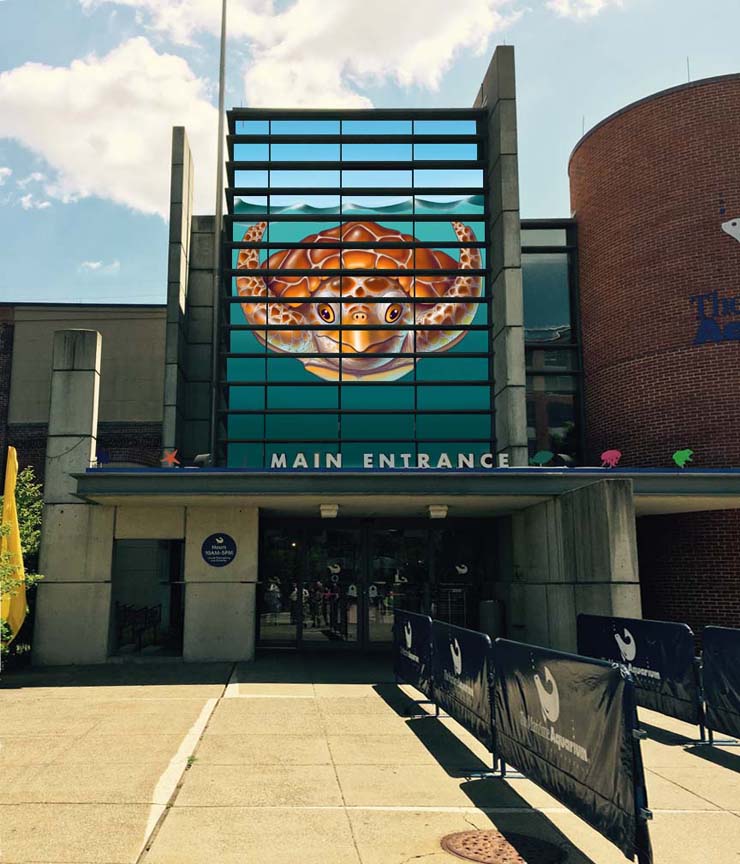


When they first commissioned the job, I have to admit I was a bit intimidated. By the size, yes, but because of its prominence in welcoming guests every day, it had to be Good! But also, have you seen an octopus?? They are about as photogenic as pile of worms, and twice as creepy. So at first when presenting sketches, I suggested some alternatives: a familiar turtle, some friendly seals, how about some nice jellyfish? No thank you, we’d like a giant octopus. Okay then.
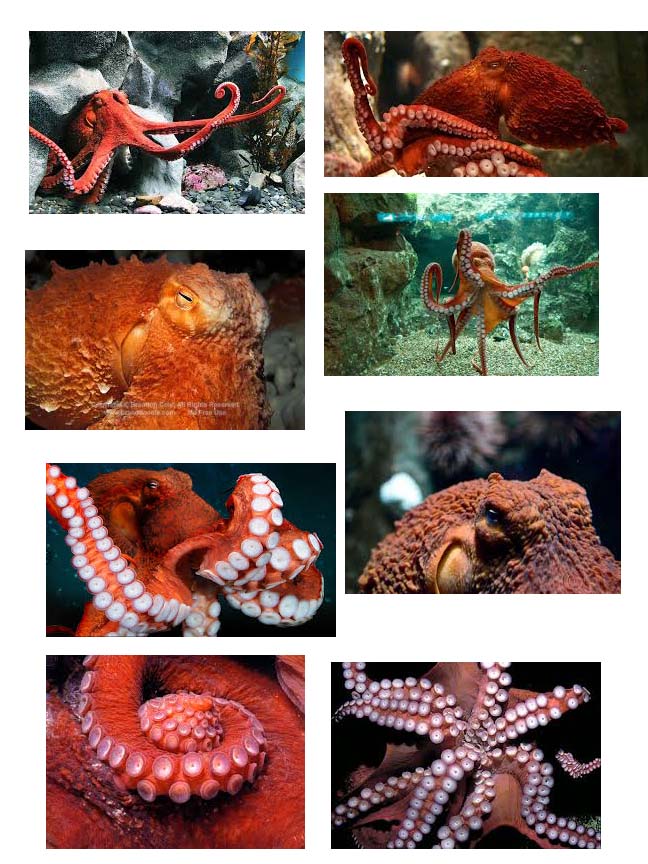
The place to start–reference photos. Bless the little cotton socks of Al Gore or whoever invented the internet! In the olden days, if you needed reference photos, you had to get in your car, drive to the Westport Library, and spend hours sifting through voluminous file cabinets of semi-randomly filed pages torn from really, really old magazines. And you might get lucky and find the visual information you were looking for. The photos above are a few of hundreds that I scanned through to come up with what I needed–the shapes, colors, textures, movements, facial expressions, eyes, and details of the Giant Pacific Octopus.
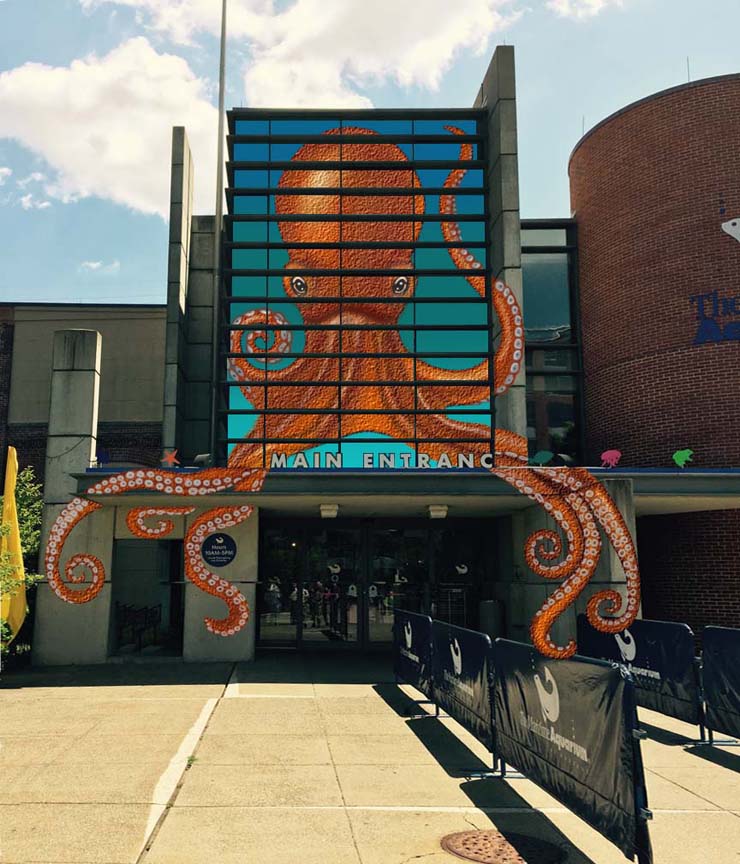
What also influences my style, and what has worked for the aquarium in the past, is that the art has to convey accuracy of the subject, but not necessarily photo-realism. It has to look, not so much what it actually looks like, as how people think of it. Then add in a dash of bright-and-punchy for visual appeal. With all that in mind, and working within the constraints of my oddly-shaped canvas, I submitted this sketch. The sketch version should be quick and low-rez, because you don’t know how many rounds of revisions you’ll be making. And thanks to the magic of Photoshop, I could present the sketch “in situ” for best visualization.

An octopus’ mouth is at the center of its eight arms (and they are properly called arms, not legs or tentacles), but thanks to the ligaments where the head joins the arms, I could imply a facial expression of serene wisdom, as you can find in the reference photos. We experimented with other eye expressions, but they were too cartoony.
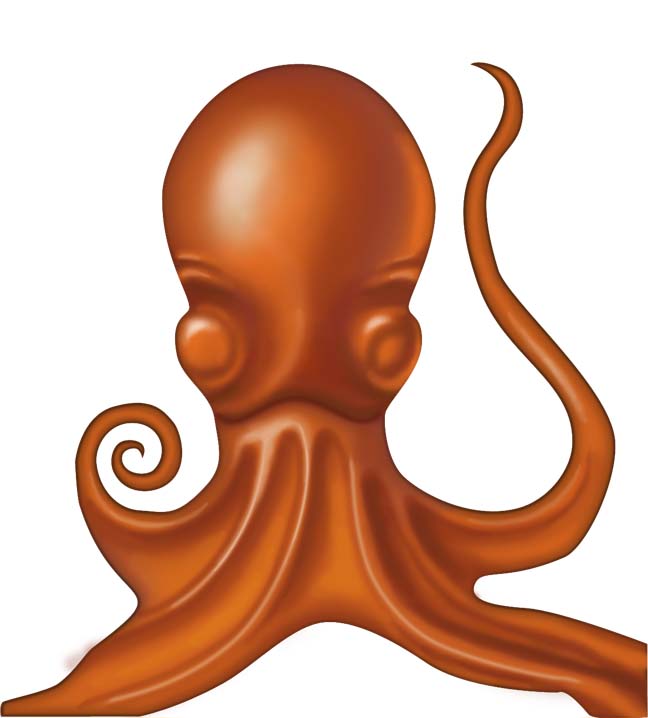
So once the final sketch was approved, I started the high-res art. This was probably the trickiest part of the whole job–because the three sections were to be enlarged so far, the file sizes had to be huge. That makes opening, painting, saving, etc. much more laggy. And I was still on Windows XP, so thanks to Geek Squad, I was really cranking along on all 3 cylinders!
My basic technique is to create work paths, fill with the middle color, and then paint up the highlights and down the shadows, all on separate layers. Visualizing your layers is one of the hardest things to get used to when starting out in Photoshop, but one of the most powerful and forgiving once you can do it. This shows the “underpainting”.
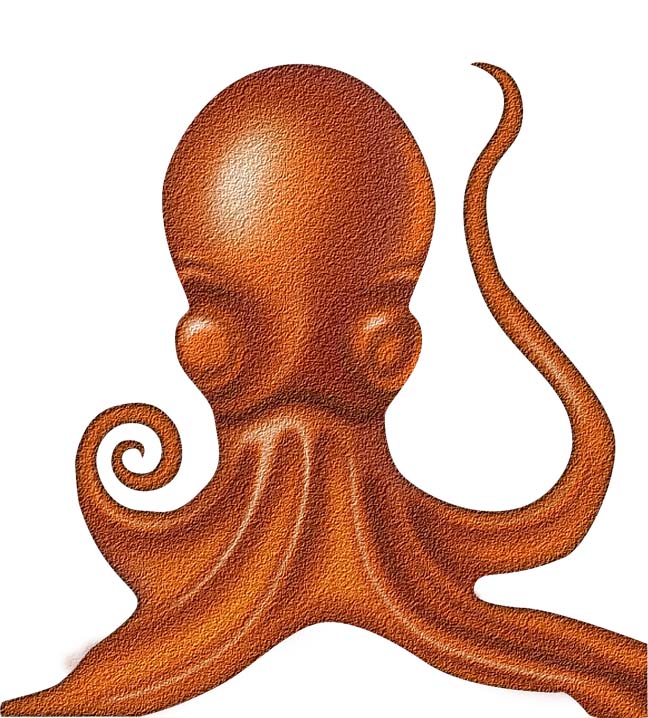
I wanted to apply this beautiful “sandstone” texture filter to the underpainting, but there was a catch–scaling the filter only went so far. So in order to get the right degree of texture, I realized I would have to scale down the underpainting from approx. 12 feet high, to 18 inches high, apply the filter, then re-enlarge the file back up to 12 feet before adding detail layers.
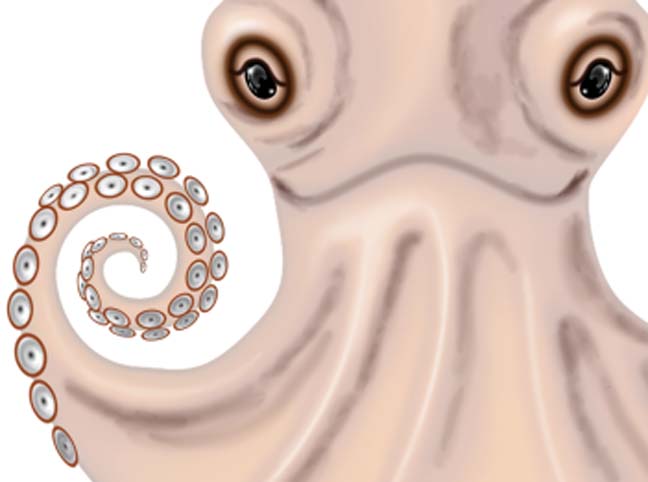
With the main color layers’ opacity turned down, this shows some of the shadow and highlight painting, which is done with my old reliable Wacom tablet-and-stylus. It also shows the eye details and early sucker positioning. Another great time-saver of Photoshop, I created one round sucker, then copy/pasted it over and over, free-transforming the rotation, scale, and shape of the elipses as I went.
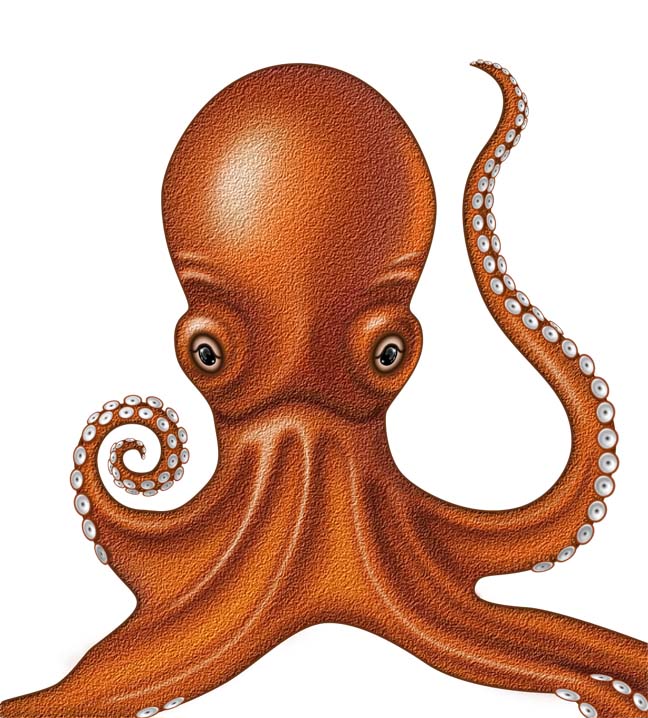
Et voila, finished octopus art, ready to upload.
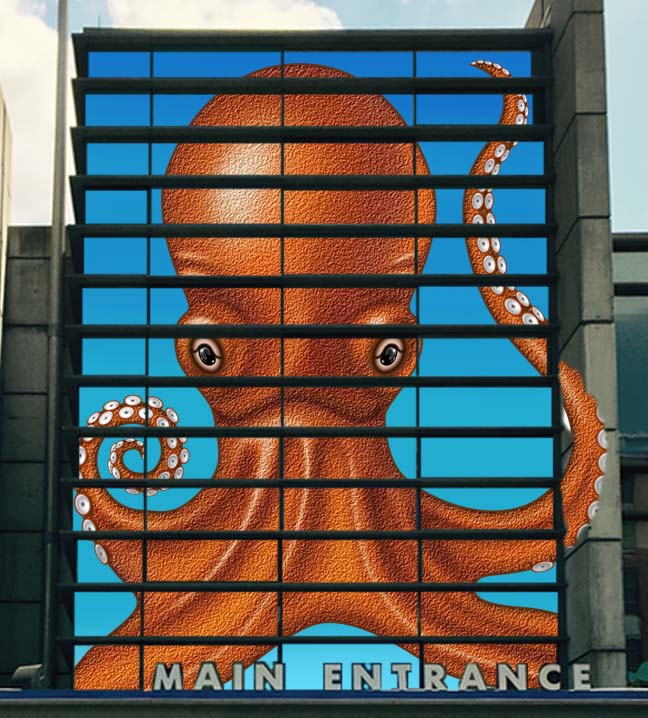
Because of the unusual configuration of windows, I had to always make sure he and his eyes were fitting into the constraints of the building.
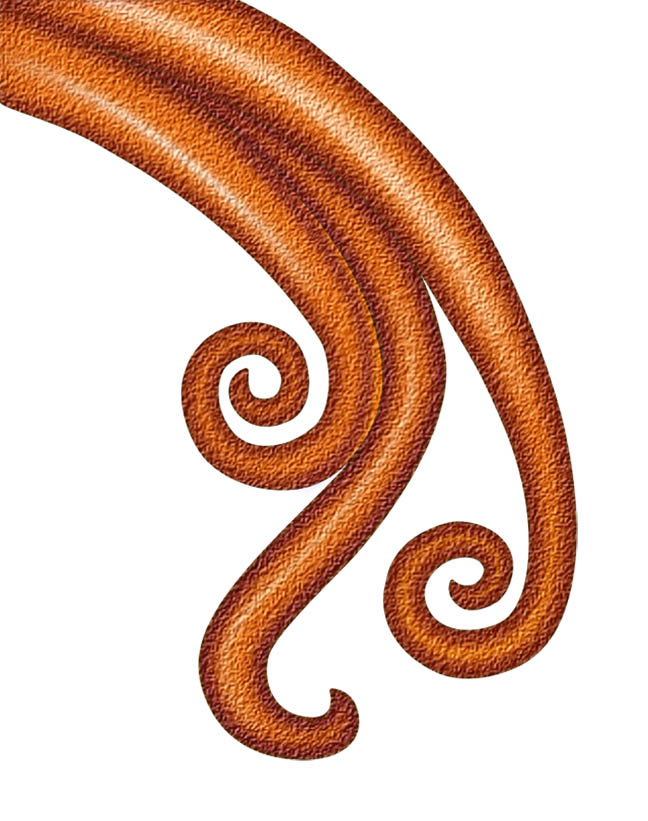
Next came the arms. I made sure this Octo had eight arms, because I knew kids would be counting them! I used the same underpainting-plus-texture technique to create these right arms.
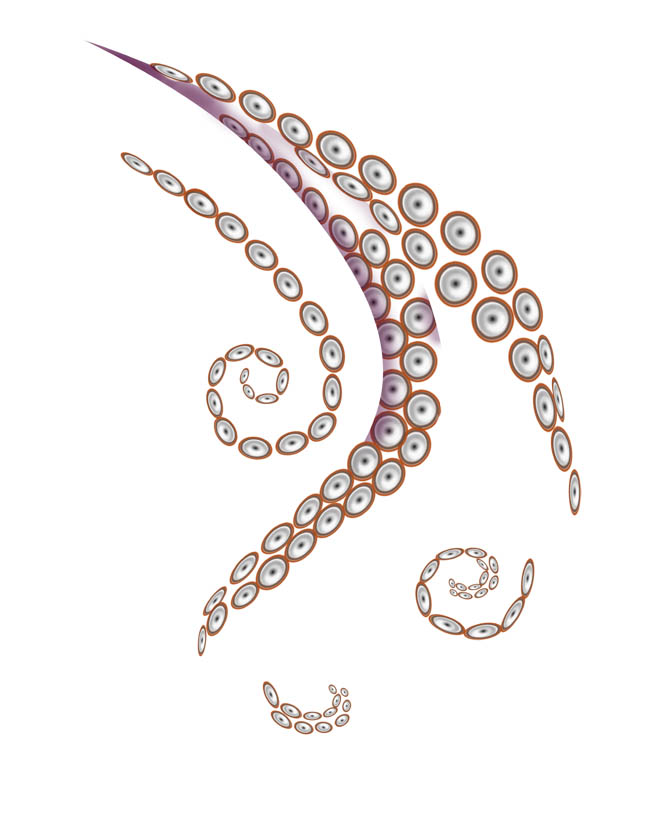
On separate layers, I added the disc-surface of the suckers.
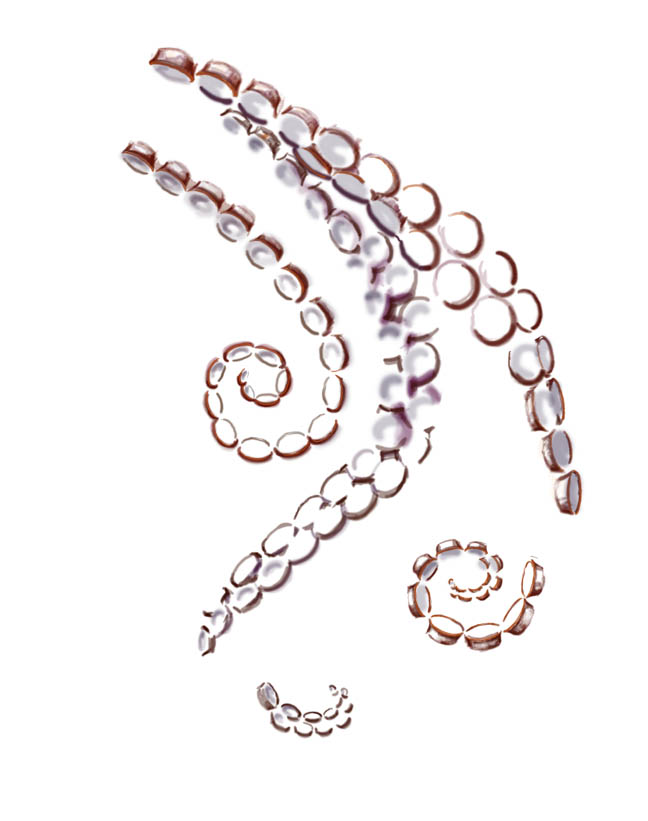
On still another layer, I hand-painted in the sucker highlights and shadows. This did take a long time, but there was no quick way around it. It involves the old-school true “painting”, accounting for the imagined light sources, cast shadows, reflections, etc. as you go.
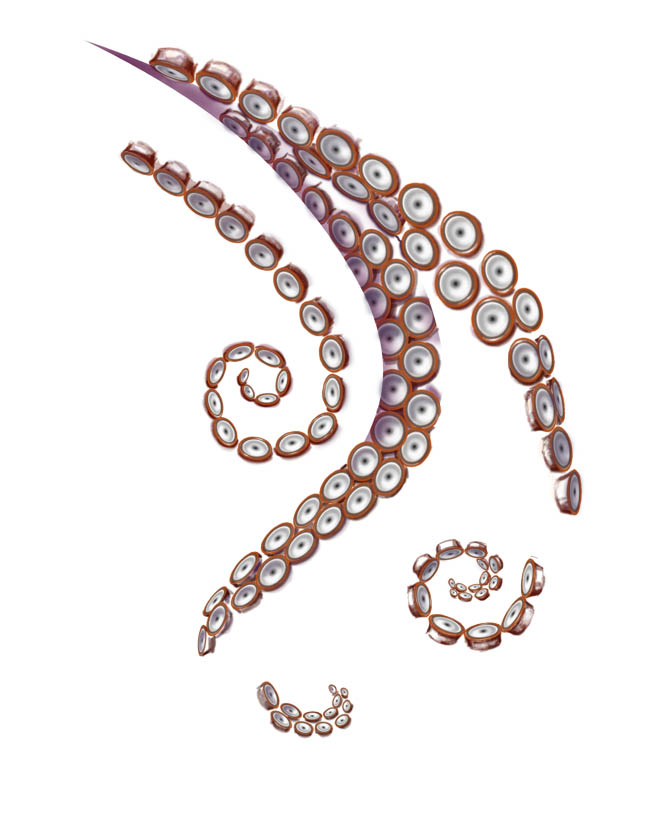
Here are those two layers combined.
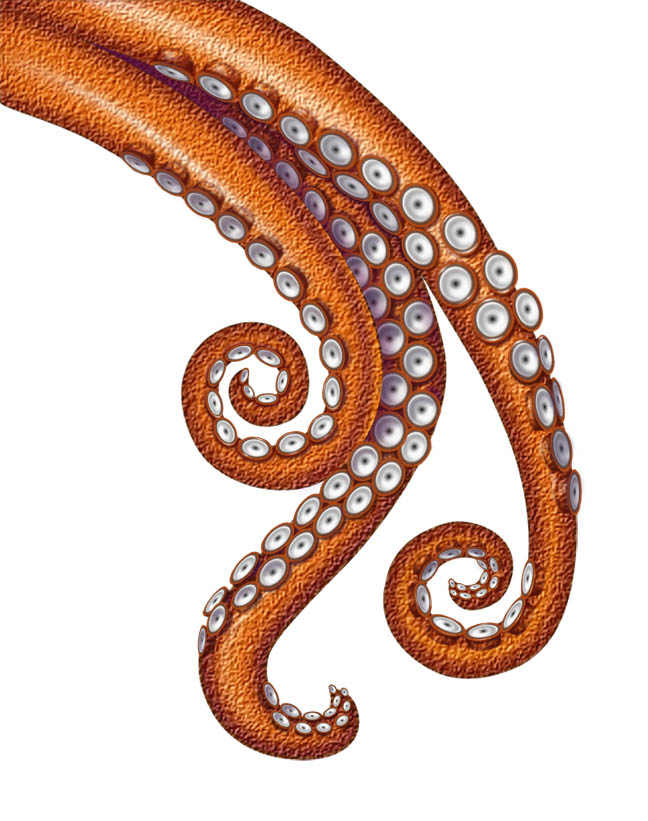
And here are the sucker layers combined with the textured underpainting. Once the art was printed on the large vinyl, it was applied to bare concrete with their heat process.
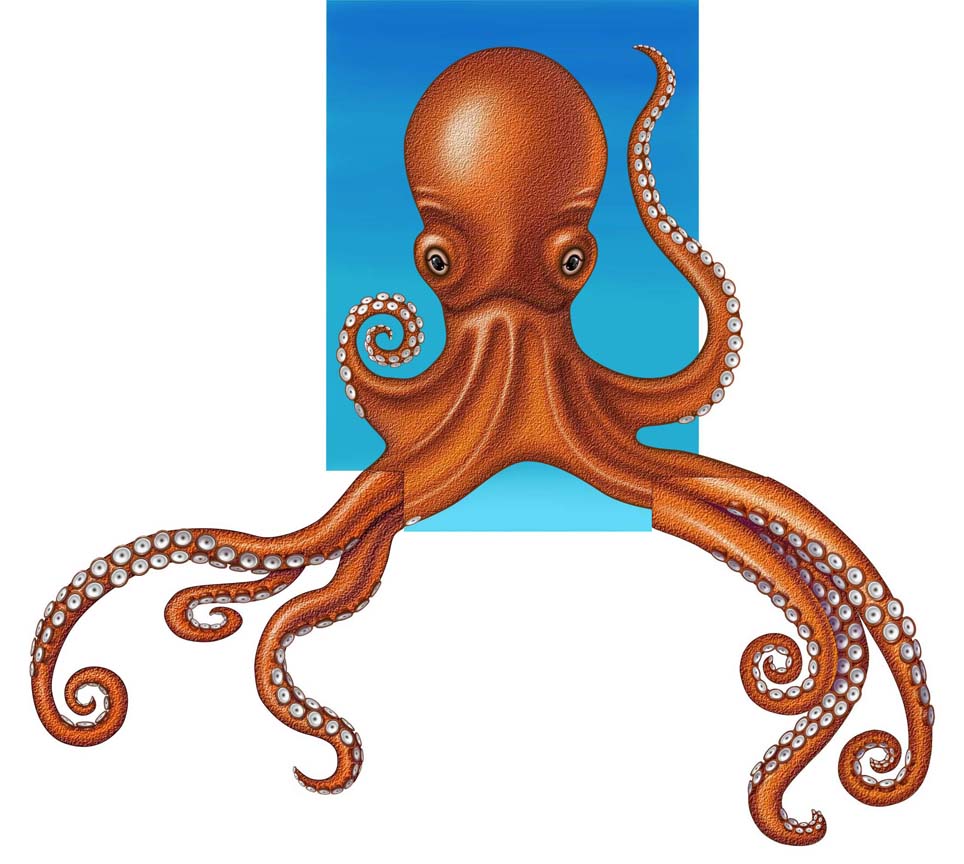
I used the same technique to create the left legs, and Signs of Success (the car-wrap company) applied their own magic to position it all on the 3-dimensional parts of the building. Another great feature of their magic is that the vinyl material can have tiny black holes in it, so that when applied to the windows, the people in the offices upstairs can see out.
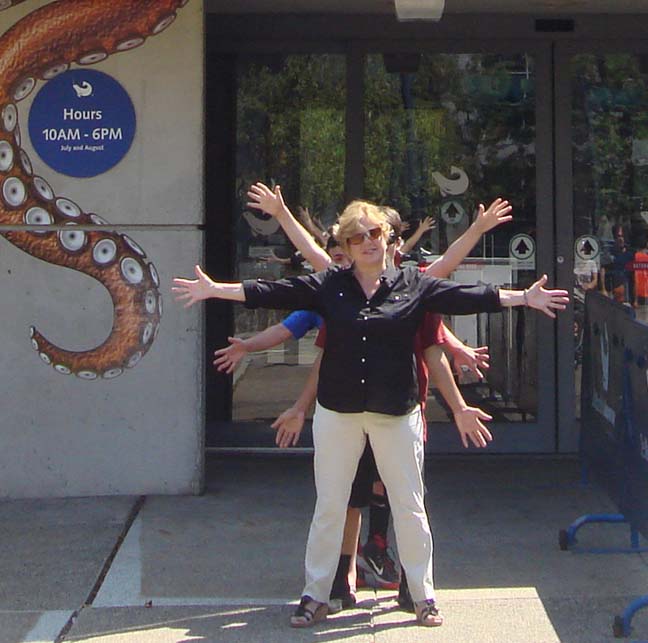
The day we got to go see the installation! One reason I love this photo is that my 13-year-old buddies were just about to grow taller than me.
So here’s the answers to the questions you wanted to know at the start of this piece, before I went off on a Photoshop tutorial tangent: How long did it take you? 64 hours at the computer, over a period of about 4 weeks. How many people will see this? Each year the aquarium hosts 450,000 visitors. Does the Maritime Aquarium actually have any Giant Pacific Octopuses in it? Yes!, one, a marvel of nature indeed! Octopuses (yes, that is the correct plural) have the ability to reason, have demonstrated that they recognize individual people, and have a cloak of invisibility–they change their coloring and texture to match their surroundings. They can weigh up to 150 lbs. and can have an arms-span of up to 20 feet. The one at the aquarium is not quite that big, but he enjoys working with puzzles and toys for enrichment, especially if there’s a treat inside. They have about 200 suckers on each arm.